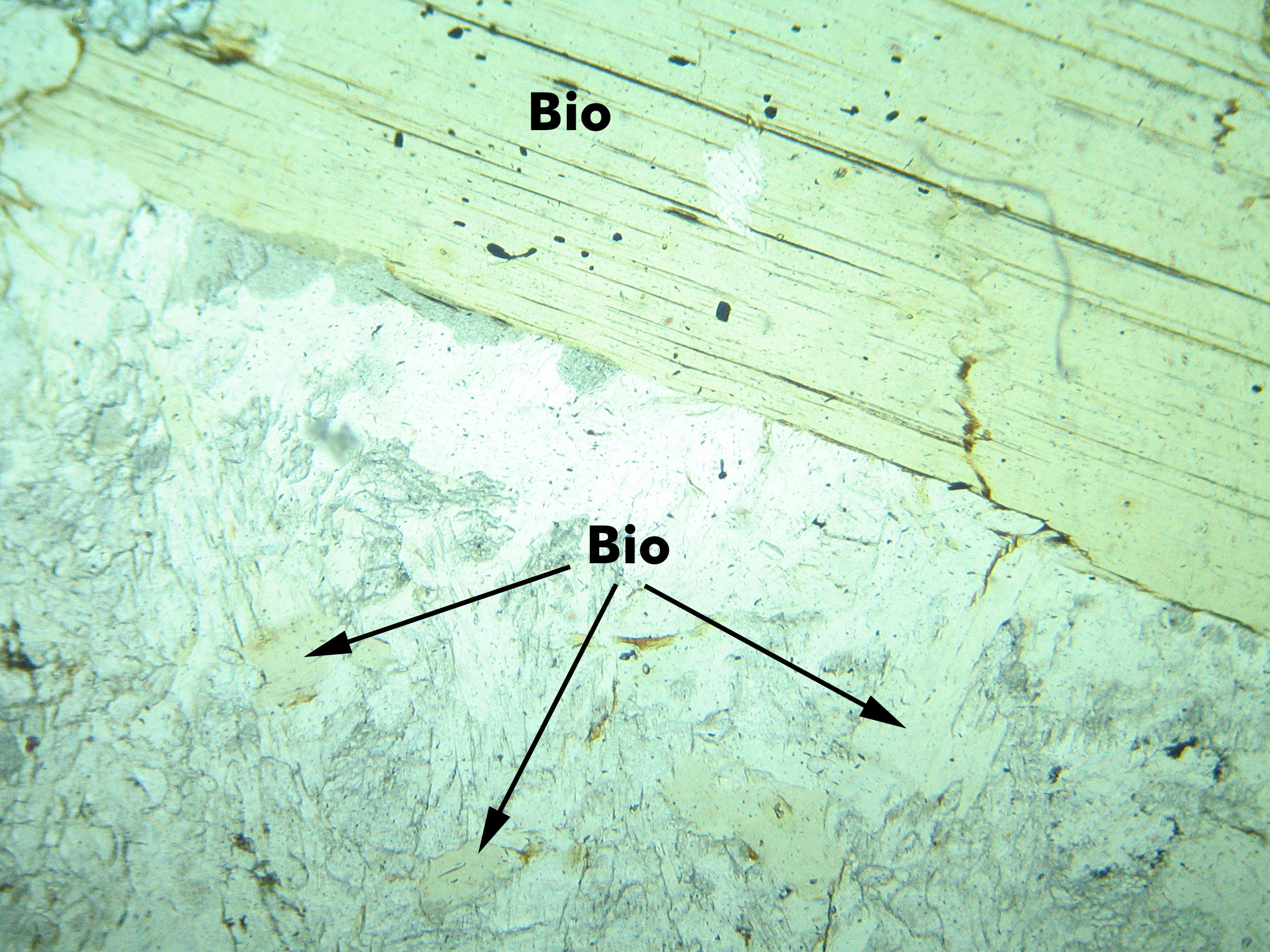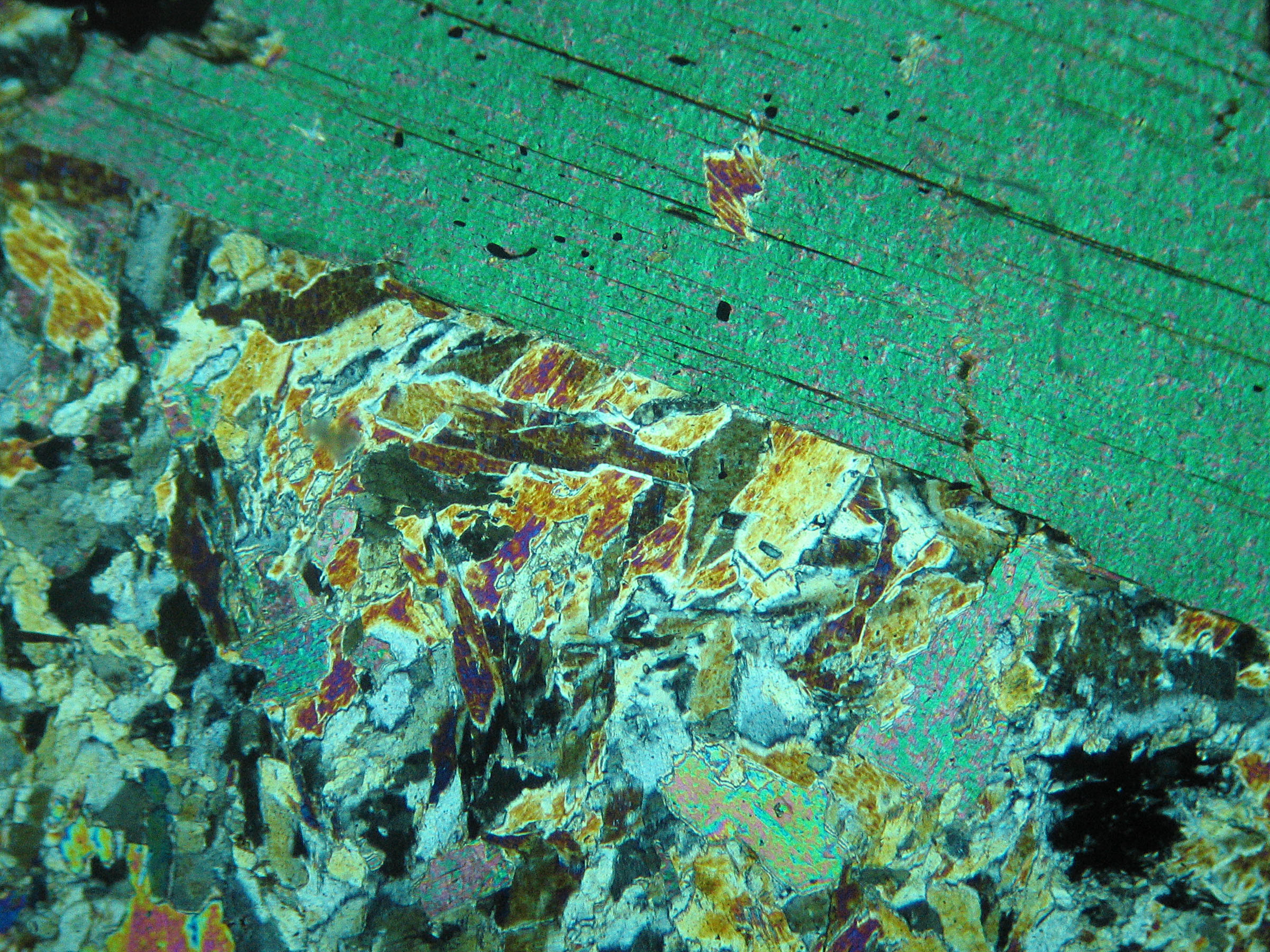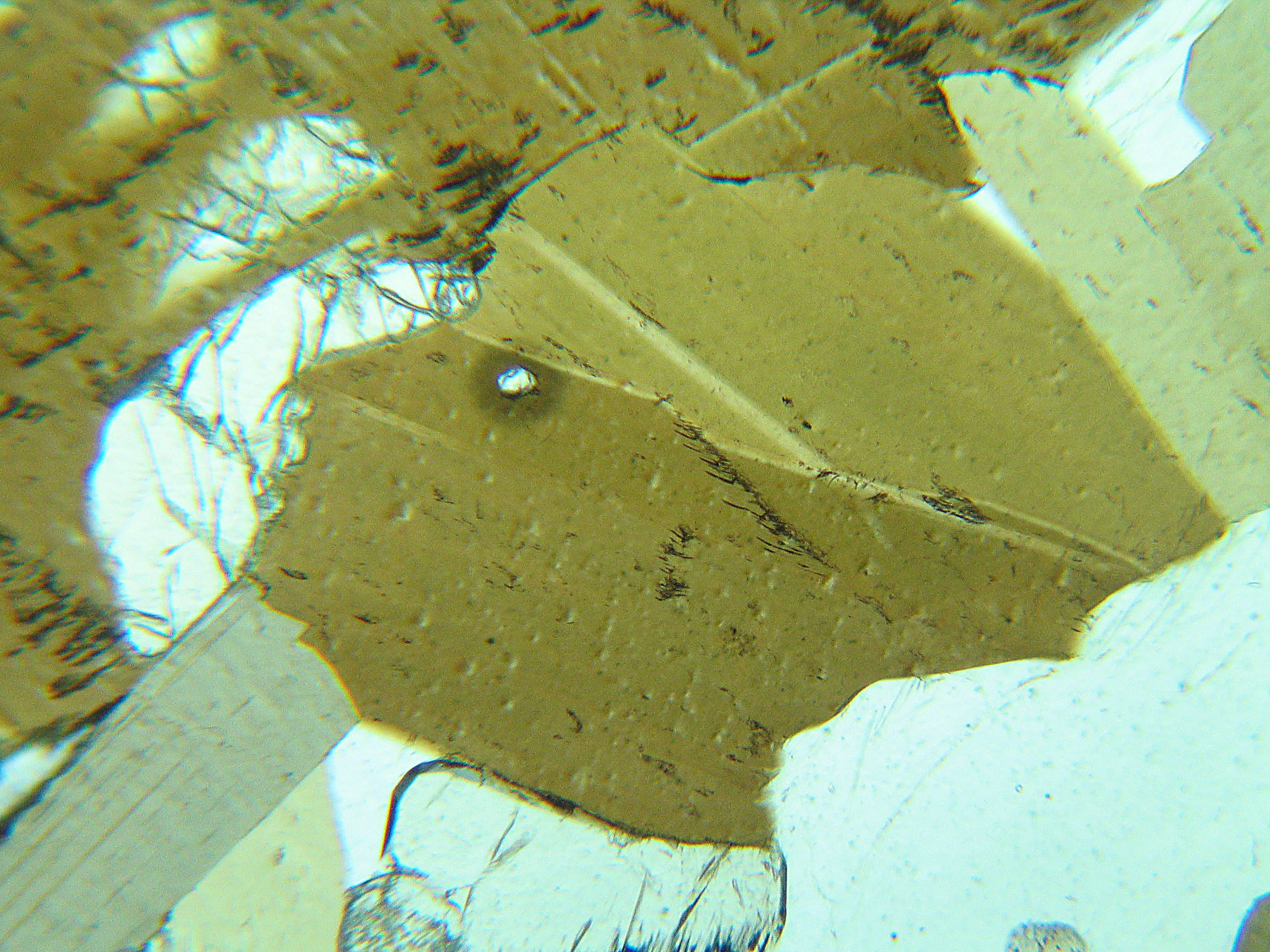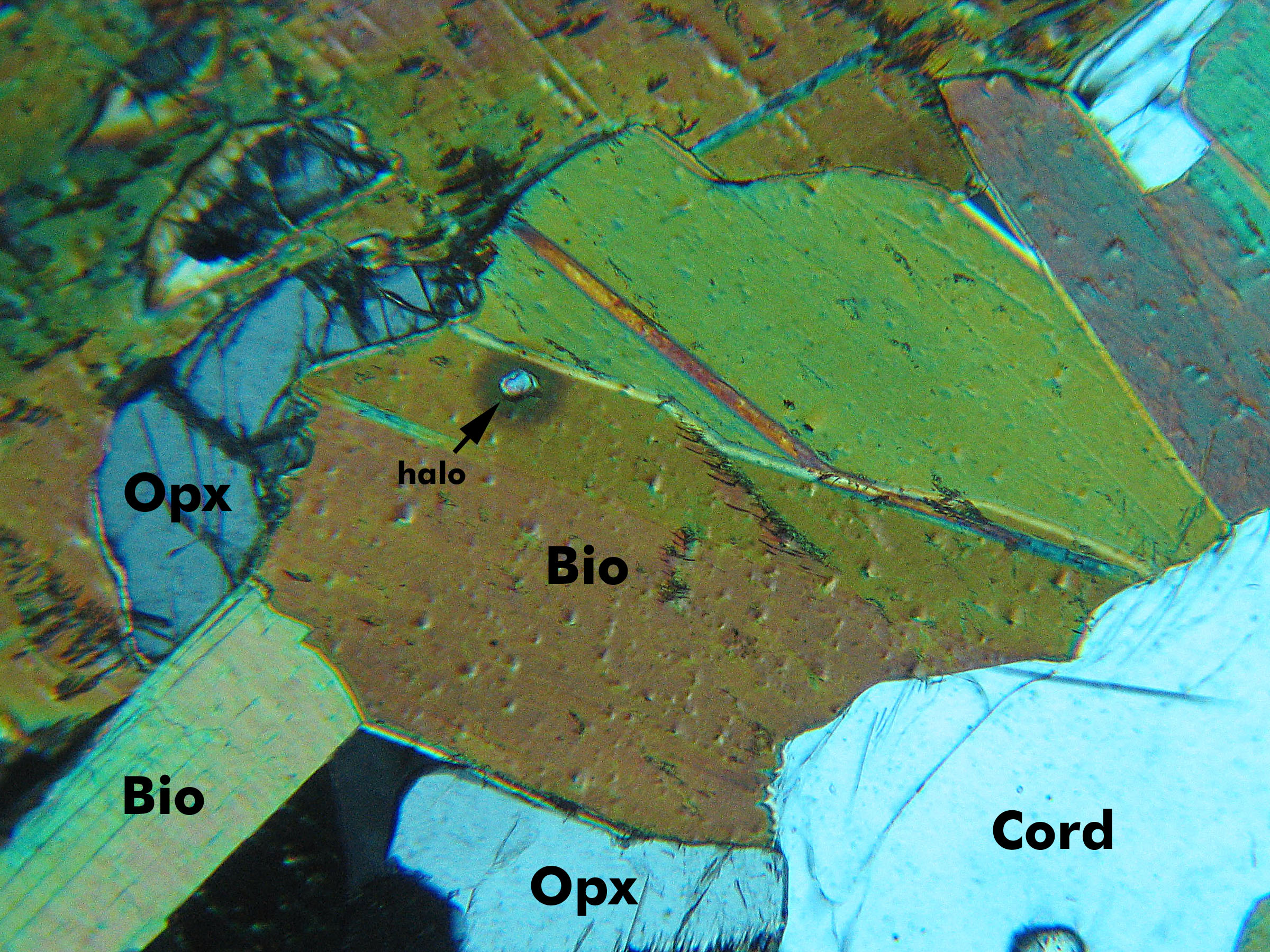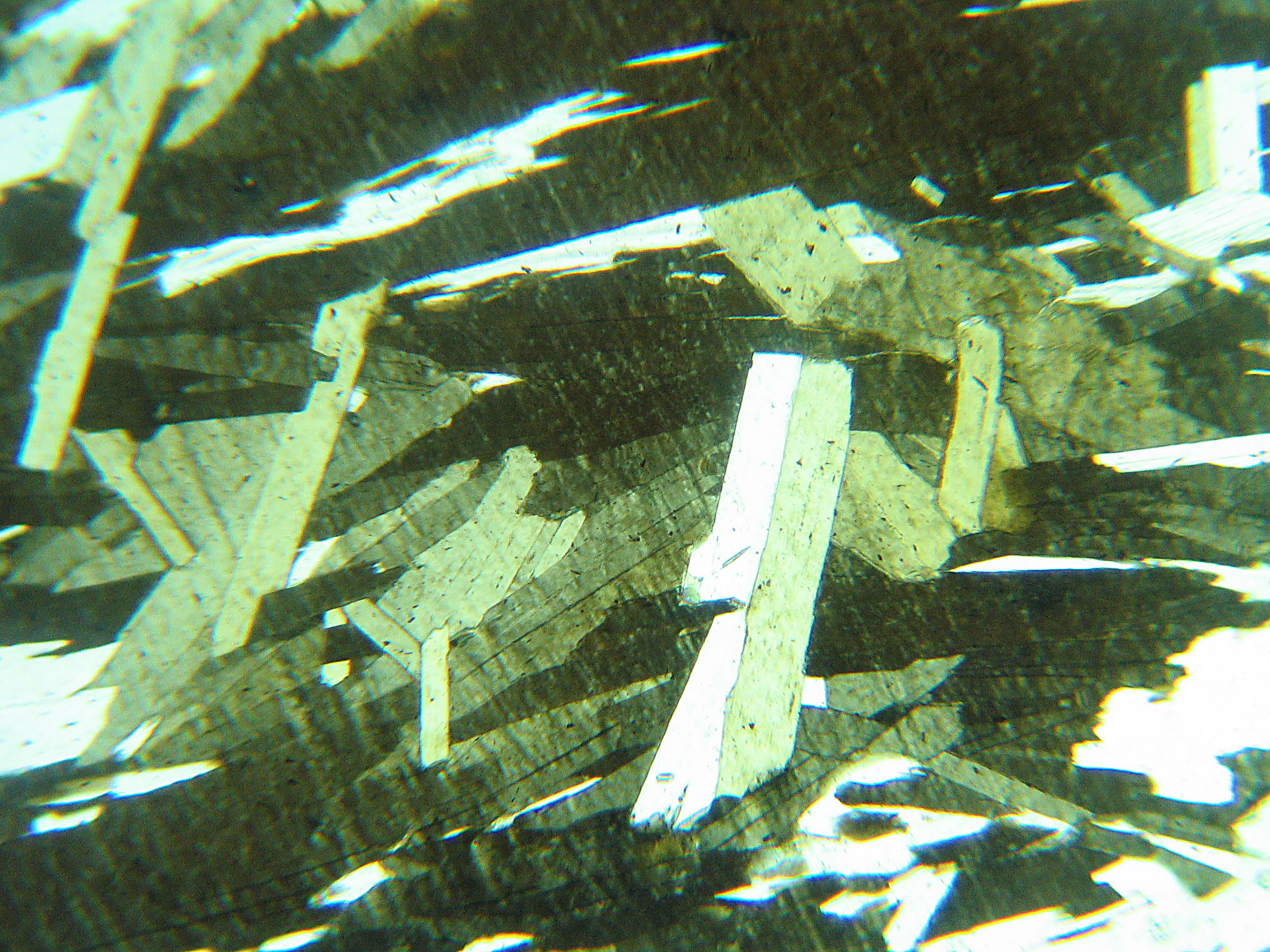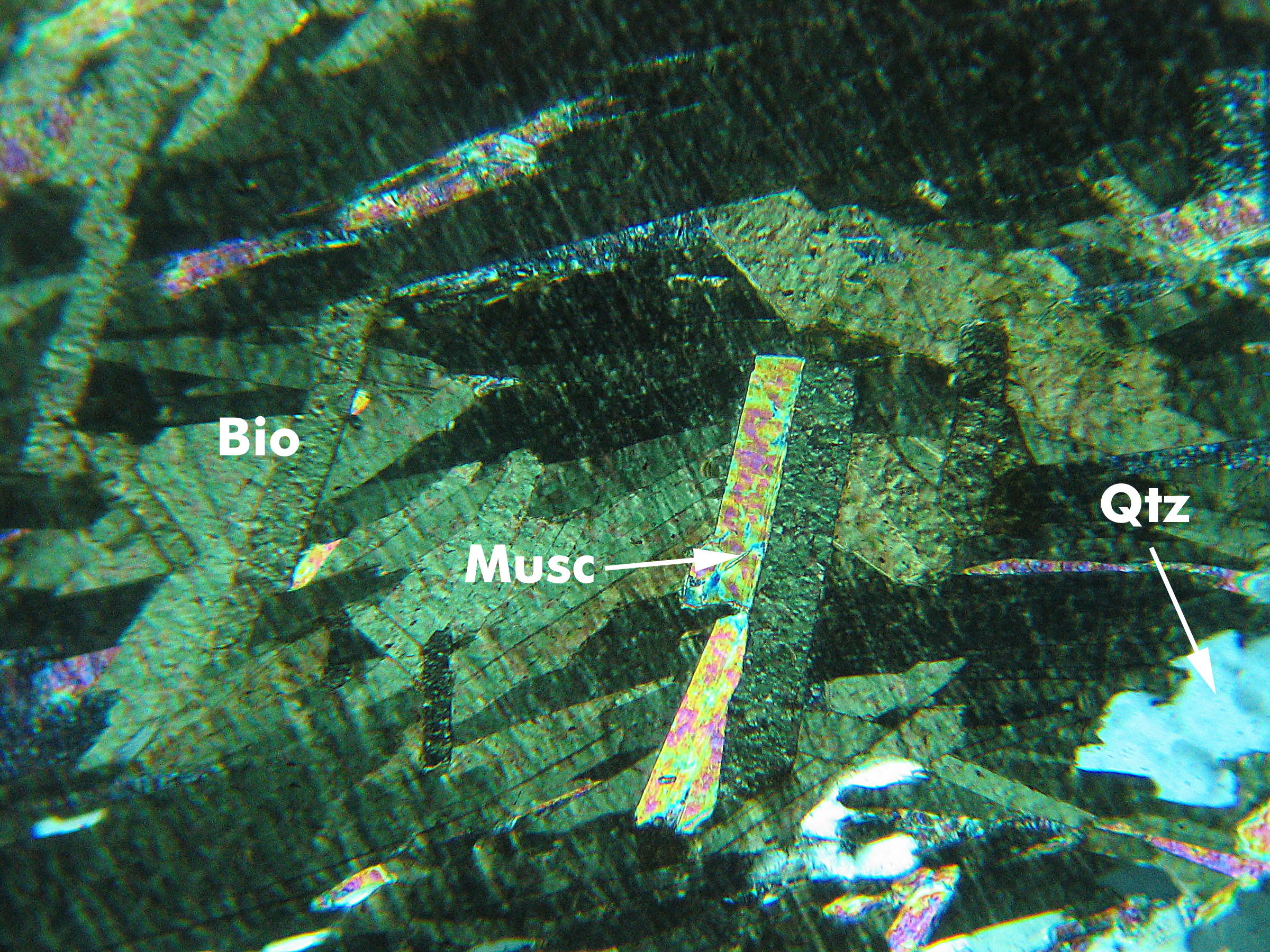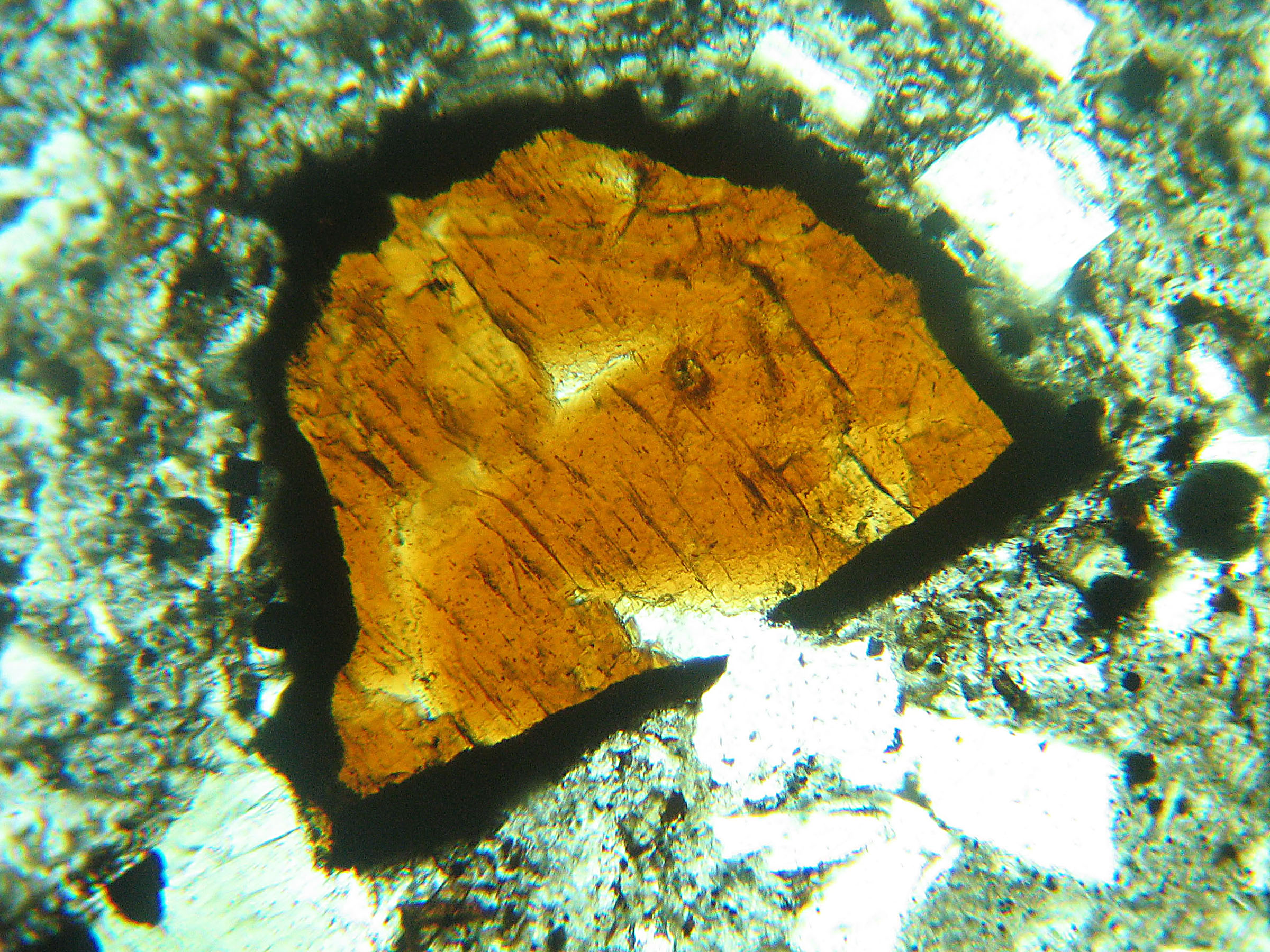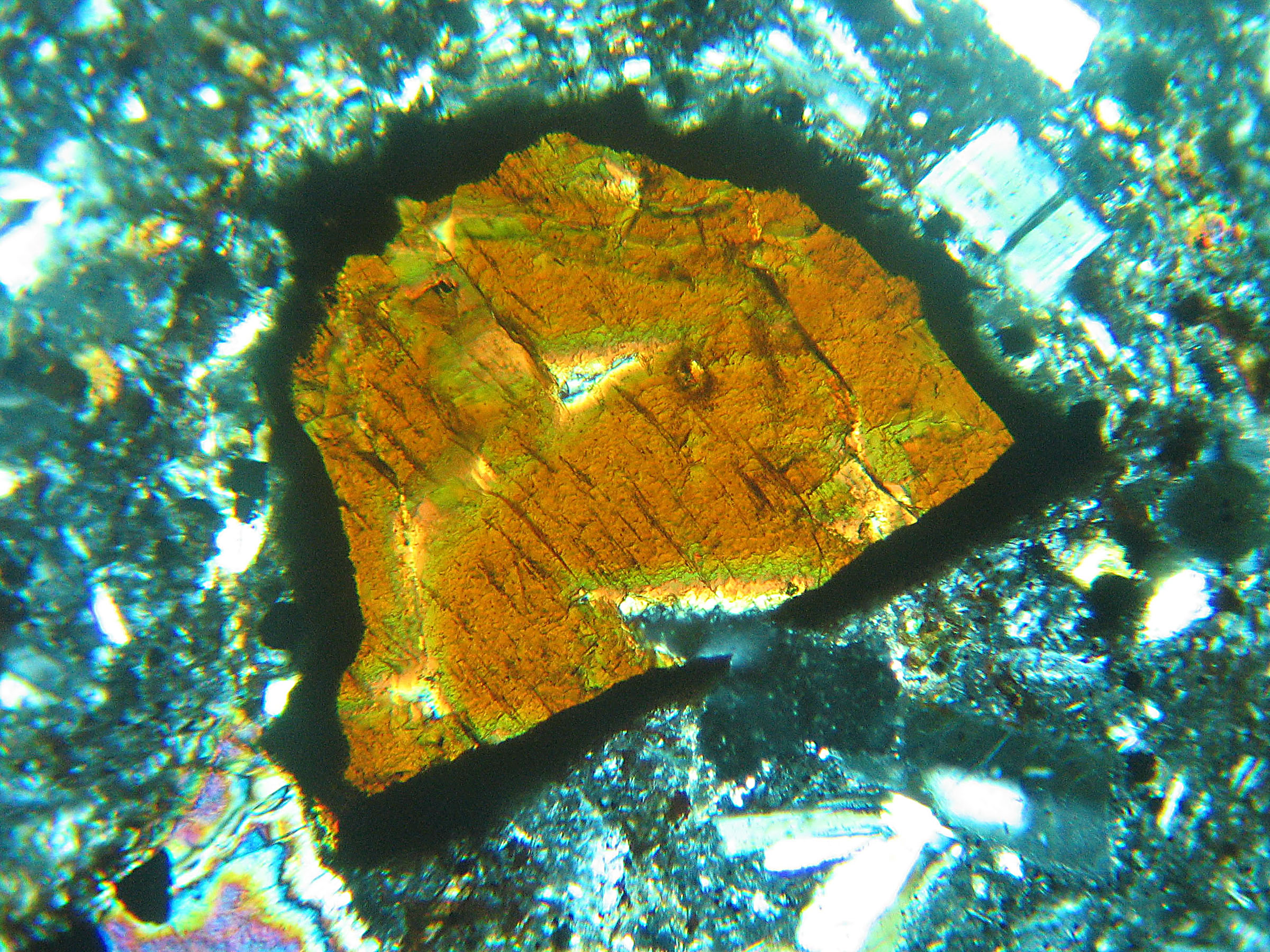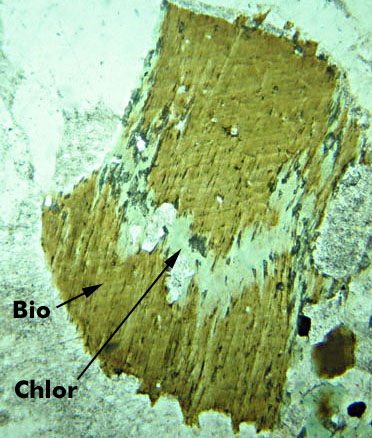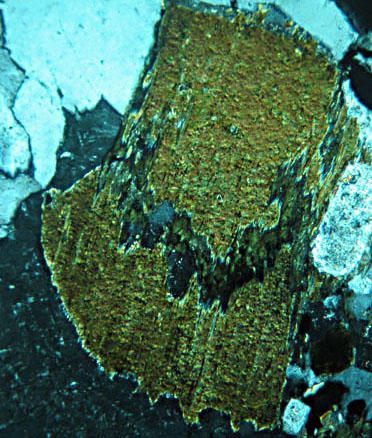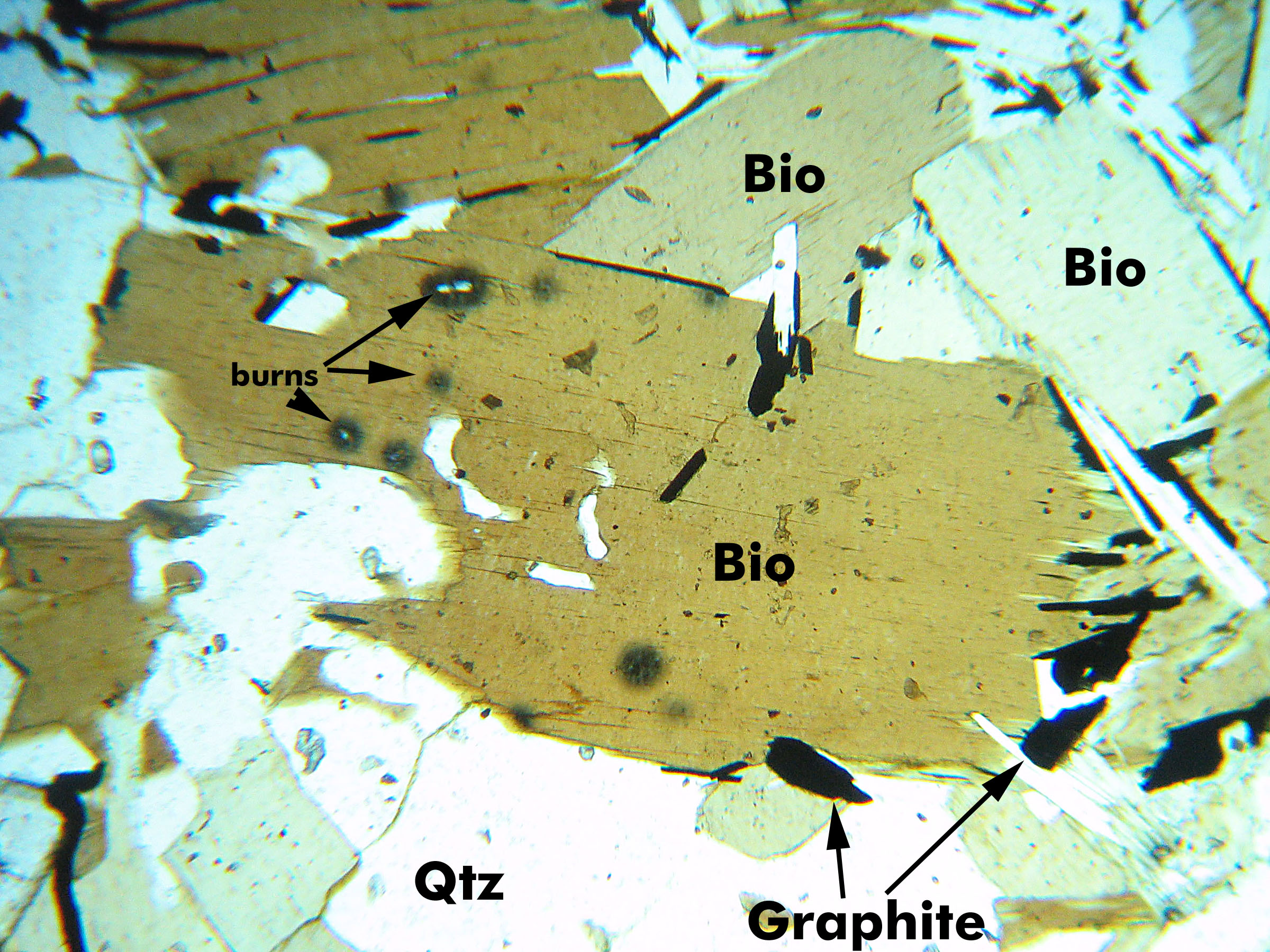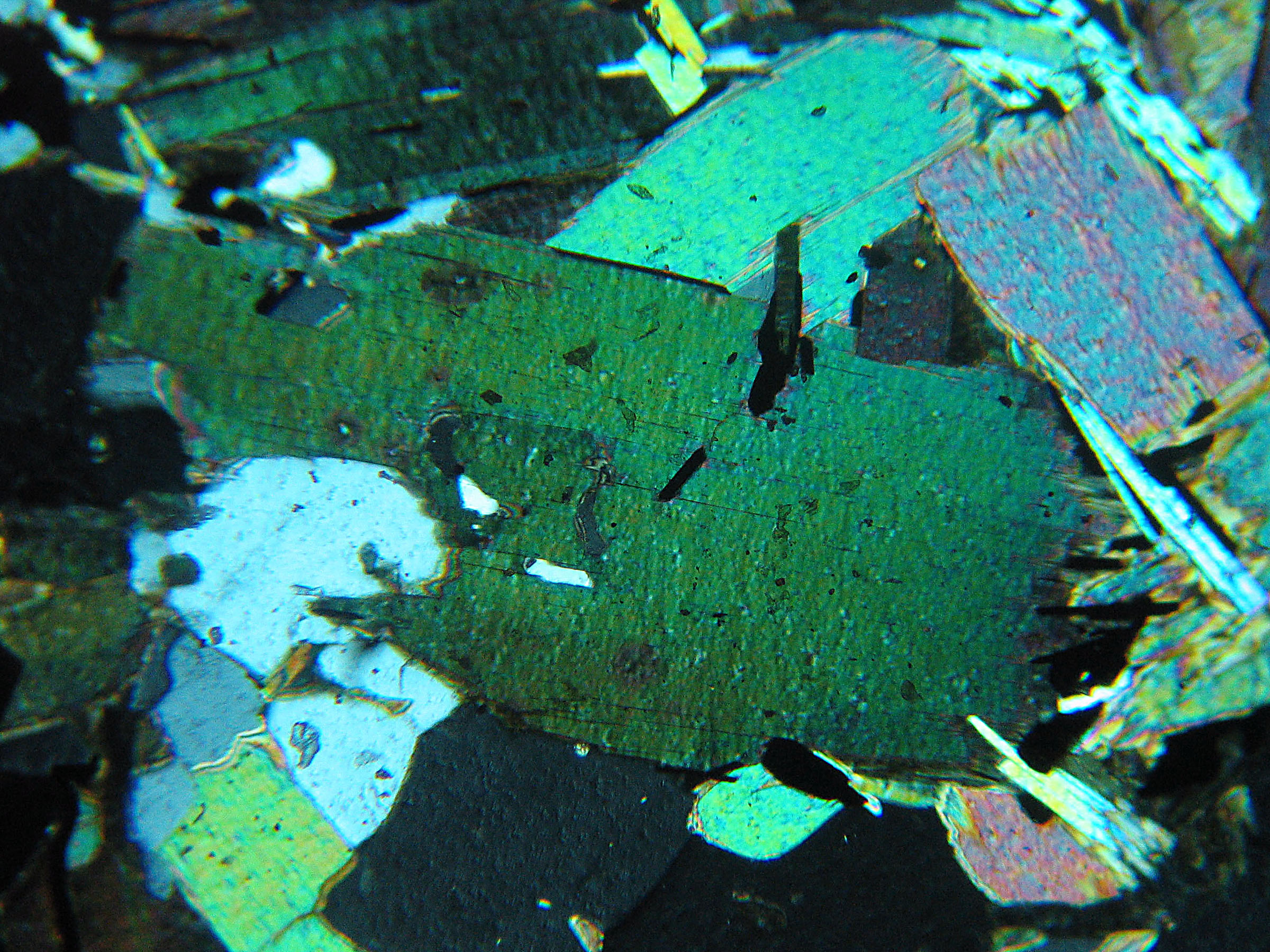|
Biotite
Occurrence
|
Biotite is widespread and common in a wide
variety of igneous and metamorphic rocks and, to a much lesser
extent, in some immature sedimentary rocks. |
Composition
|
Biotite's chemistry is variable, so optical
properties vary as well. The most significant end members are
annite (KFe3AlSi3O10(OH)2)
and phlogopite (KMg3AlSi3O10(OH)2). |
Identification
|
In general, keys to identifying biotite are
its color and pleochrism, cleavage,
optical texture and characteristic extinction, and habit. Biotite's
features generally make identification unambiguous. However,
in some medium-grade metamorphic rocks and volcanic rocks, the
features are less prominent. |
Important properties
|
·Color
- generally pleochroic, typically in
shades of brown, but also can be yellow, green or red. Common
biotite is one of the most strongly colored minerals seen in
thin section. For biotite with low Fe-content (phlogopite), coloration
is more subtle (clear, light browns and tans). |
|
·Habit and cleavage
- often appears as tabs or long skinny flakes which may be bent.
It shows one excellent cleavage, depending
on grain orientation. Rarely, it forms hexagonal crystals. |
|
·Birds-eye or pebbly extinction
or wavey pattern of interference
colors, especially when looking down on flat side of flakes. |
|
·Extinction angle is 0 to a
few degrees from cleavage. |
|
·Interference
colors may range up to 2nd order red, but color of mineral
may mask them. |
|
·Often contains pleochroic
halos around small included zircons. |
|
·Biaxial (-), 2V= 0-25o
. |
|
·Often alters to cholrite. |
Similar minerals
|
·Light colored phlogopite may be confused
with muscovite but has a smaller
2V. |
|
·Brown or green hornblende
or other amphiboles (images at right) may occasionally be mistaken
for biotite, but amphibole has 2 cleavages, often a diamond shaped
cross section, and lacks birds-eye/pebbly extinction. |
 PP PP |
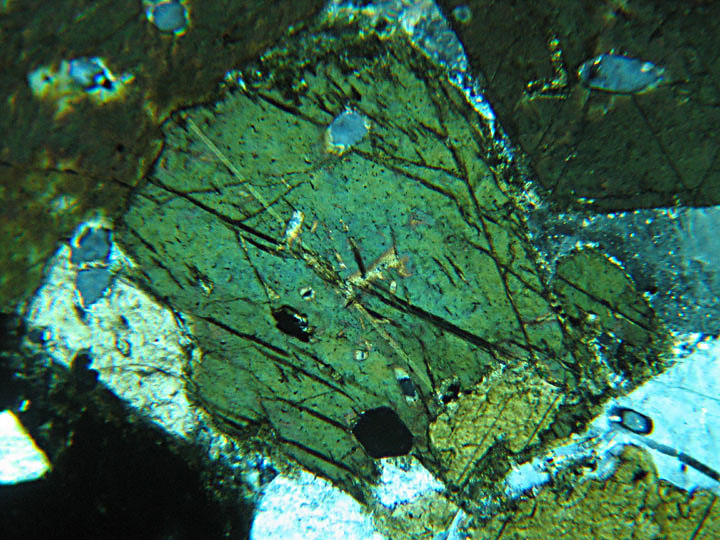 XP XP |
|
|
·Stilpnomelane, a brown brittle mica,
has higher relief, lacks birds-eye/pebbly
extinction, has poorer cleavage, and
has a pseudouniaxial interference figure. |
|
·Brown or green tourmaline lacks biotite's
characteristic extinction, cleavage
and habit. It also appears darker/stronger colored
in some orientations. |
|
·Chlorite
has lower relief and birefringence (often showing anomalous colors) |
|
 PP
PP XP
XP